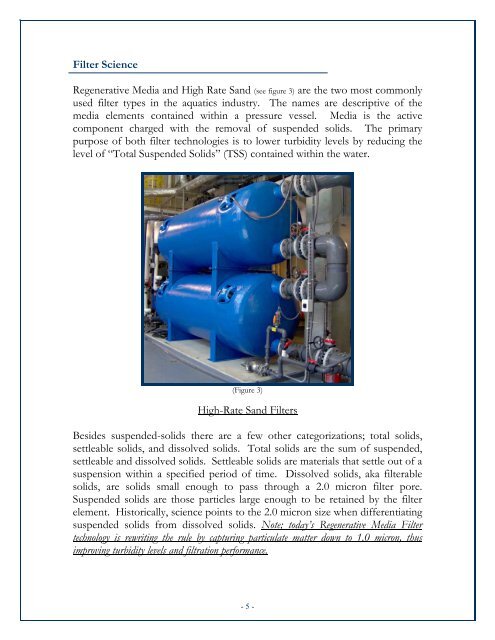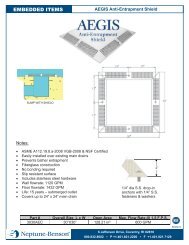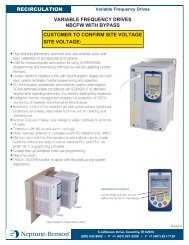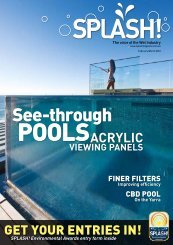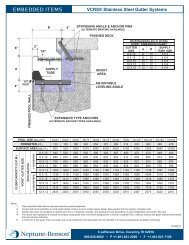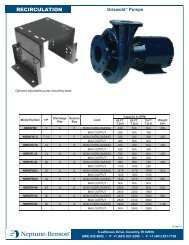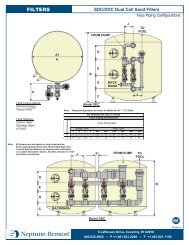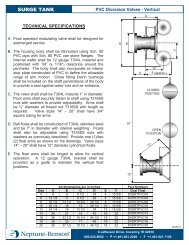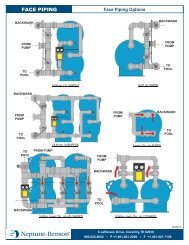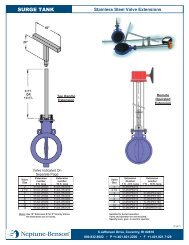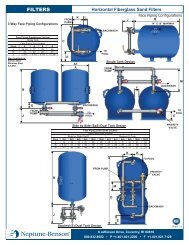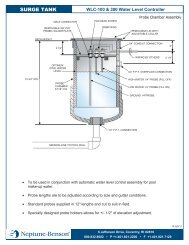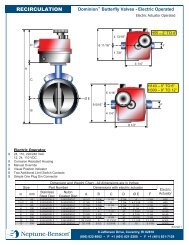TURBIDITY METRICS â Regenerative Media ... - Neptune-Benson
TURBIDITY METRICS â Regenerative Media ... - Neptune-Benson
TURBIDITY METRICS â Regenerative Media ... - Neptune-Benson
Create successful ePaper yourself
Turn your PDF publications into a flip-book with our unique Google optimized e-Paper software.
Filter Science<br />
<strong>Regenerative</strong> <strong>Media</strong> and High Rate Sand (see figure 3) are the two most commonly<br />
used filter types in the aquatics industry. The names are descriptive of the<br />
media elements contained within a pressure vessel. <strong>Media</strong> is the active<br />
component charged with the removal of suspended solids. The primary<br />
purpose of both filter technologies is to lower turbidity levels by reducing the<br />
level of “Total Suspended Solids” (TSS) contained within the water.<br />
(Figure 3)<br />
High-Rate Sand Filters<br />
Besides suspended-solids there are a few other categorizations; total solids,<br />
settleable solids, and dissolved solids. Total solids are the sum of suspended,<br />
settleable and dissolved solids. Settleable solids are materials that settle out of a<br />
suspension within a specified period of time. Dissolved solids, aka filterable<br />
solids, are solids small enough to pass through a 2.0 micron filter pore.<br />
Suspended solids are those particles large enough to be retained by the filter<br />
element. Historically, science points to the 2.0 micron size when differentiating<br />
suspended solids from dissolved solids. Note; today’s <strong>Regenerative</strong> <strong>Media</strong> Filter<br />
technology is rewriting the rule by capturing particulate matter down to 1.0 micron, thus<br />
improving turbidity levels and filtration performance.<br />
- 5 -


